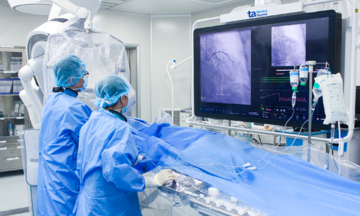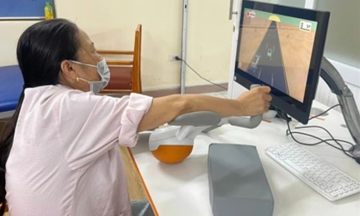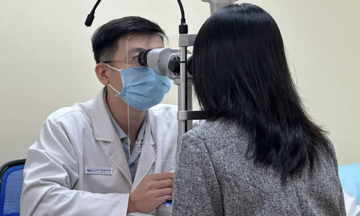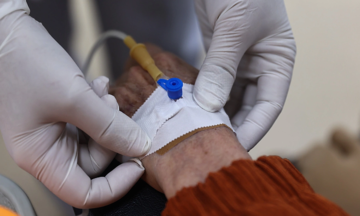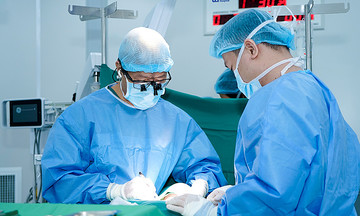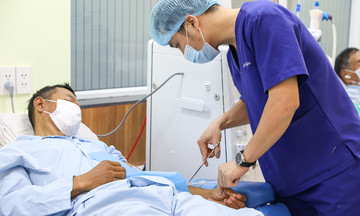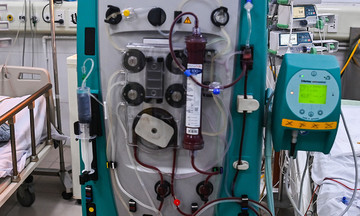After trying herbal remedies for a week, Tuan's left leg weakened, prompting him to visit Tam Anh General Hospital in Hanoi. Dr. Vu Trung Hieu, from the Department of Orthopedic Trauma, observed instability in Tuan's knee joint, with excessive tibial movement in both directions. An MRI revealed a grade 2 tear of the lateral meniscus, knee effusion, and bone marrow edema in the tibial plateau and distal femur. The anterior and posterior cruciate ligaments in his left knee were ruptured, showing no signal on the scan.
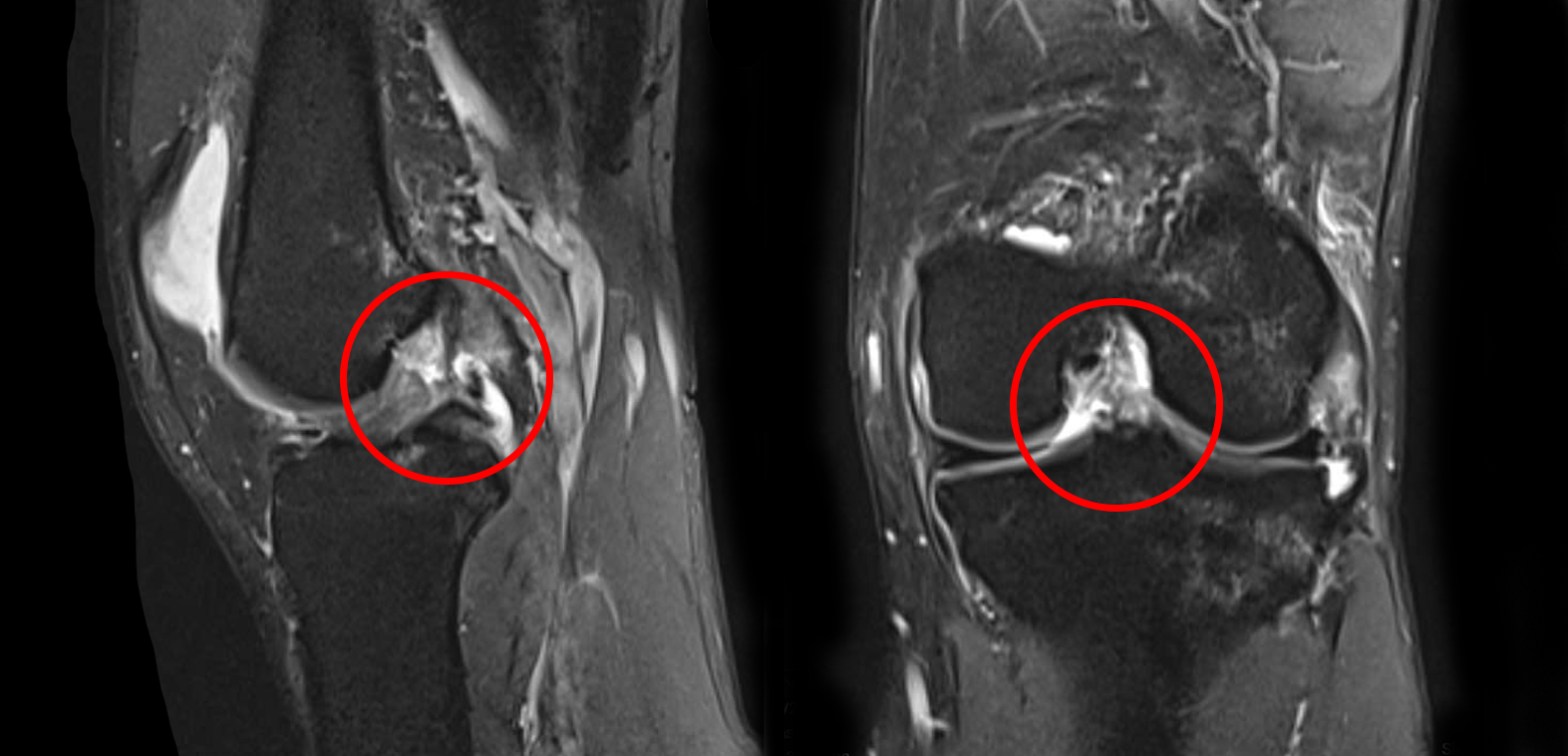 |
Tuan's MRI scan shows no signal from both cruciate ligaments in his left knee. Photo: Tam Anh General Hospital |
The human knee joint has 4 ligaments: anterior cruciate, posterior cruciate, medial collateral, and lateral collateral. Dr. Hieu explained that most injuries involve a single rupture of the anterior cruciate ligament. Ruptures of both the anterior and posterior cruciate ligaments occur in only about 10% of complex knee injuries.
Dr. Hieu performed an "all-inside" surgical reconstruction of both ligaments using Tuan's own hamstring tendons under spinal anesthesia. The hamstring tendon served as a graft, and the remaining nerve receptors at the ligament's base helped preserve almost all sensation in Tuan's knee joint after recovery. Dr. Hieu also repaired the meniscus tear using specialized instruments under arthroscopy. The 3-hour operation was twice as long as a single ligament reconstruction surgery.
Post-operatively, Tuan remained conscious and received multimodal pain management, including local anesthesia in the joint. After 12 hours, he began rehabilitation exercises for the surrounding joints and muscles to prevent muscle atrophy and joint stiffness. Two days later, Tuan was walking with crutches and was discharged.
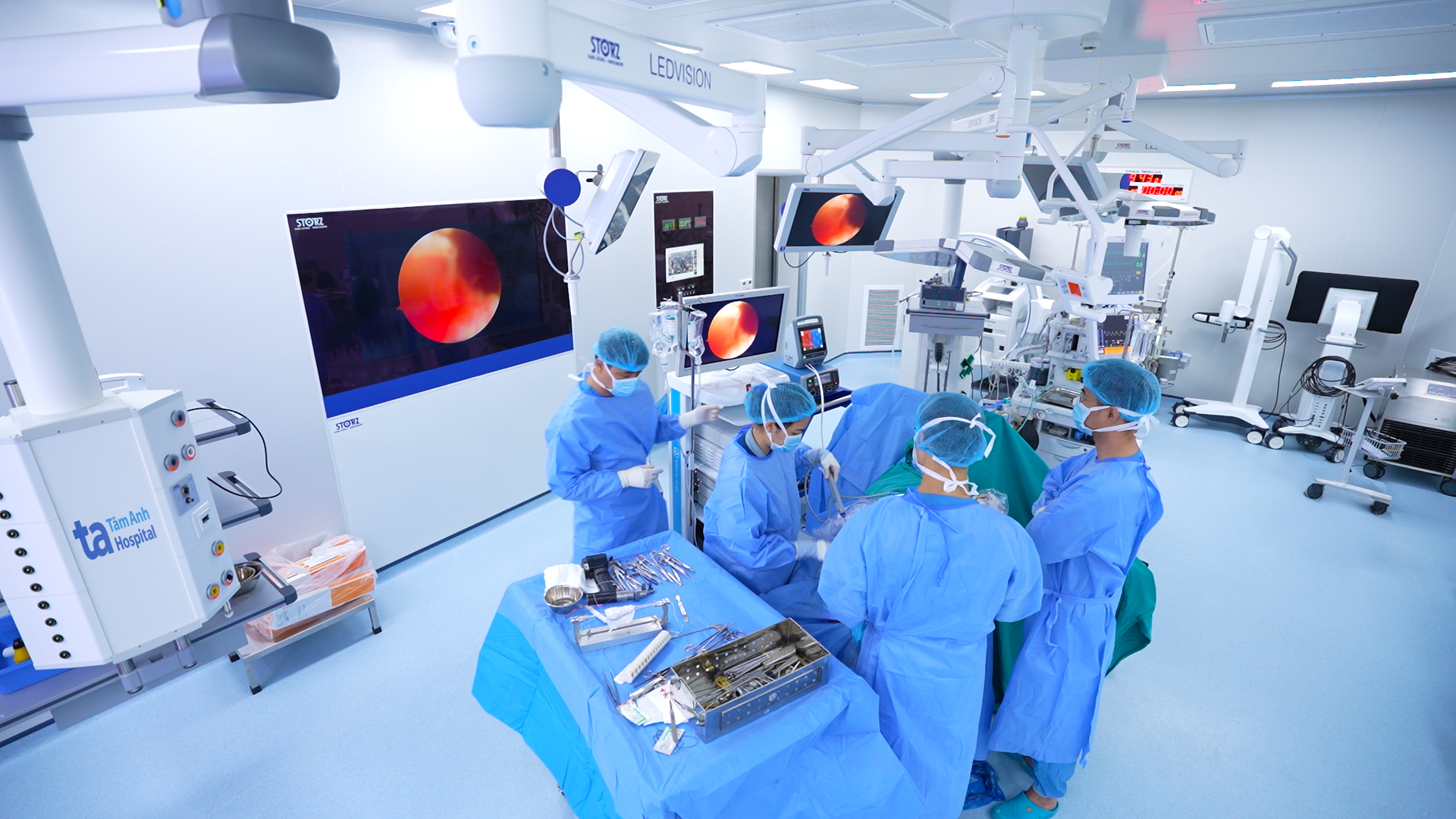 |
Dr. Hieu and his team perform ligament reconstruction surgery on Tuan. Photo: Tam Anh General Hospital |
Dr. Hieu emphasized the importance of early detection and treatment for multiple ligament ruptures, as they can lead to secondary injuries within the joint, such as meniscus tears, cartilage damage, and premature osteoarthritis. Reconstructing only the anterior cruciate ligament while neglecting the posterior cruciate ligament can destabilize the joint, increase stress on the anterior cruciate ligament, and potentially cause the reconstruction to fail. This could necessitate further surgery, with a significantly higher failure rate for the second procedure.
Recovery from multiple ligament ruptures takes longer than usual, requiring consistent rehabilitation both at the medical facility and at home, along with regular check-ups for assessment and adjustments. If you experience knee pain, swelling, or instability after a sudden, strong impact, you should have your ligaments examined. A "popping" sound during the injury may indicate a ruptured knee ligament.
Thanh Long
| Readers can submit questions about musculoskeletal diseases here for doctors to answer. |



